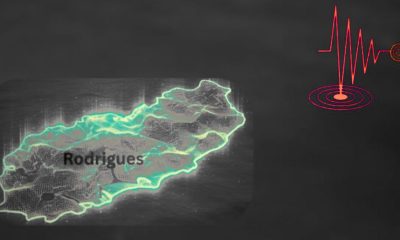Business
VVIP-Linked Company’s Financial Crisis, Allegedly in Debt by Rs 3.6 Billion

According to Le Mauricien, a prominent Mauritian company, with a significant stakeholder being a high-profile VVIP, is facing a financial crisis. The company has seemingly accumulated debts worth Rs 3.6 billion from various banks and the Mauritius Investment Corporation, which was founded by Harvesh Seegolam, the CEO of the Bank of Mauritius. However, apparently the company has ceased to repay its debts on time, leaving creditors in a precarious situation.
The scenario could be a reminiscent of a similar situation in 2014, which was only resolved through a rescue operation.
Currently, in the midst of an election season, all efforts are being made to keep the details of this affair under wraps, fearing that it could tarnish the reputation of the connected VVIPs.
The company’s non-performing loans (NPLs) primarily concern public funds, raising concerns about the management of public resources.
The matter has been circulating among authorized circles and within the institutions involved, but all parties are maintaining a “motus et bouche cousue” (a deliberate silence) to avoid putting the VVIP’s clan in a precarious position.
The company’s financial difficulties are all the more striking given its significant real estate portfolio in a popular tourist area.
Despite being in a booming sector, it is allegedly unable to service its loans. The company is also engaged in a massive luxury villa project on the west coast, comprising 15 high-end residences.
Moreover, it is unclear how these massive loans were approved without the company submitting its financial statements to the Registrar of Companies since 2018.
The last financial statement submitted in 2020 is showing losses of Rs 25.6 million. Since then, no further financial statements have been submitted.
One of the company’s administrators is suspected to be influential enough to intimidate those who might dare to question their actions.
The company has taken out an Rs 500 million loan from a major local bank, but has failed to repay it for some time.
As a result, this loan is now considered an “Impaired Asset” on the bank’s books. The bank, which is also an shareholder of the company, is left wondering what to do with this non-performing loan.
The company has also applied for an additional Rs 200 million loan, but the Credit Committee of the bank rejected this request. Industry experts confirmed that the company’s credit risk is perceived as “higher than average.”
Another concern is that the company has failed to honor its financial obligations for several months, including non-payment of local suppliers.
Three companies involved in food and transportation services have been affected by this non-payment.
The company has another exposure worth Rs 1.2 billion with a second bank in the country, which is specialized in writing off debts for individuals close to power.
Pressure is being exerted on this bank to restructure the debt. However, a Credit Committee member has expressed disagreement with this proposal.
This member subsequently found himself transferred to another department within the bank. The omnipresent CEO of this bank has ties to all high-level circles in the country.
The consequences of these non-performing loans could be significant for these financial institutions, particularly if they are not restructured or repaid.
One banker explained, “Non-performing loans are very problematic for banks. They must make provisions for these irrecoverable debts, which directly affects their profitability and dividend payments to shareholders.”
The second bank that provided a Rs 1.2 billion loan is currently trying to downplay this potential scandal.
The third loan that needed to be repaid is worth Rs 1.9 billion and was taken out from the Mauritius Investment Corporation (MIC), which was founded by Harvesh Seegolam.
Industry leaders are questioning the true intentions of this company: “Where did these Rs 3.6 billion go, including millions from the Bank of Mauritius through MIC?” they wondered.
Another lingering question is how these institutions were able to provide financing to a company that has not submitted its financial statements to the Registrar of Companies and what is really going on within this company with connections to untouchable figures.
Source: Le Mauricien











